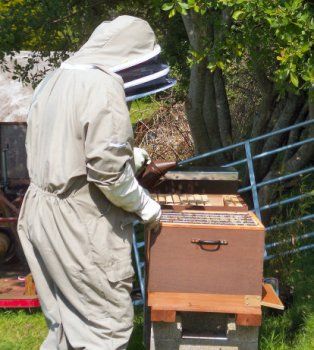Although there are 600 000 beekeepers in Europe, honey production is not
keeping up with demand, due partly to an alarming decline in bee
populations. Smaller populations affect not only honey production but
also the 70 % of food crops and 84 % of vegetables that depend on
pollinators.
Beekeepers traditionally monitor bee health by physically opening and inspecting apiaries, which is time consuming and invasive regardless of whether intervention is required. The EU-funded
SWARMONITOR (Development of a tool for effective diagnostic monitoring of honey bee colonies) project aims to develop tools for remote, non-invasive hive monitoring.
SWARMONITOR's monitoring tool will detect changes and patterns of vibrations in the hive, which may indicate swarming, health disorders or deterioration in the hive. Swarming occurs when the queen leaves the hive with most of the worker bees to establish new colonies, and needs to be managed by beekeepers.
Researchers fitted hives with instruments called accelerometers that measure vibrations, the data for which can be collected remotely. They encouraged swarming in a dedicated apiary with 20 hives fitted with accelerometers and commercial monitoring equipment that records the spectrum of vibrations.
Using vibrational data, researchers gave vibration patterns statistical scores that allow advance warning of a swarming event about to occur. Researchers are also using these experimental hives to monitor health conditions, including infestations by bee pathogens that can cripple an entire colony.
SWARMONITOR's remote monitoring tools will allow more effective and less labour-intensive apiary management. It will also enhance productivity by pre-empting swarming and disease outbreaks.
